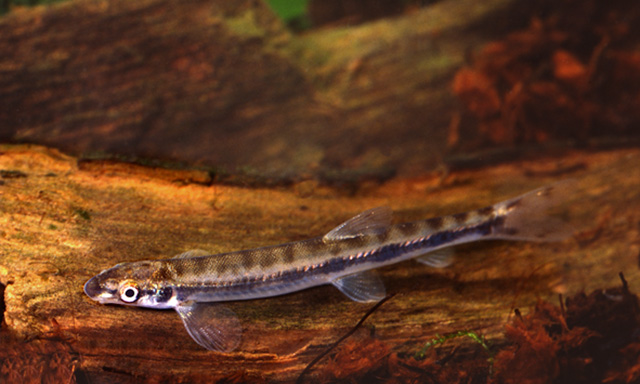|
Dorsal spines (total): 0; Dorsal soft rays (total): 9-11; Anal spines: -0; Anal soft rays: 8-9. Diagnosis: body depth 7 (Ref. 1878) - 11.4 (Ref. 26644) times in TL, 5.9-9.4 times in SL (Ref. 26644). Head as broad as deep, 2 times as long as broad (Ref. 1878), its length 5.4-6.4 times in TL and 4.4-5.1 times in SL (Ref. 26644). Snout length 32.9-40.7% HL (Ref. 26644). Eye lateral, just visible from below (Ref. 1878), 4-5.3 times in HL, 19-25% HL (Ref. 26644). Interorbital width 40-46.9% HL (Ref. 26644). Dorsal fin origin at equal distance from anterior border of eye, centre of eye (Ref. 1878) or snout tip (Ref. 3022) and from root of caudal. Predorsal length 54.8-59% SL (Ref. 26644). Anal fin origin a little nearer root of caudal than root of ventrals (Ref. 1878, 89309). Preanal length 76.1-79.3% SL (Ref. 26644). Pectoral a little shorter than head (Ref. 1878, 3022), longer than pelvic (Ref. 3022), 14.9-21.6% SL (Ref. 26644). Pelvic fin 11.6-17.7% SL (Ref. 26644). Caudal peduncle nearly twice as long as deep (Ref. 1878), its length 13-16.3% SL and 63.0-77.9% HL (Ref. 26644). Distinct coloration consisting of rounded dark olive spots on the back (Ref. 26644).
Description: caudal fin deeply forked (Ref. 1878).
Coloration: in life: ground color olive brown, darker on back, silvery on belly; 8-(rarely)10 dark olive round spots along lateral midline, interspace between spots darker than ground color, so that a midlateral line can be seen which usually has width of eyes or slightly wider; back with numerous large spots of dark olive color; behind dorsal fin spots saddle-like and extending on both sides; in front of dorsal fin spots may have diferent sizes, most of them restricted to the back, while few extend downwards on both sides; dark bar from anterior part of gill cover through eye to tip of snout; light area between lateral spots and spots along back, this area however does not have the character of a distinct stripe, and in few specimens patterns of back and flanks are in contact; spots of back do not extend downwards between those of flanks or below midlateral line; light area above midlateral spots continues on head as a light bar above the dark bar; dorsal and anal fins with some faint darkish marks; 2 vertical dark brown bars on caudal fin, posterior one restricted to lobes; anterior bar may be indistinct or restricted to 2 dark spots or to 3 spots each in upper and lower half of fin (Ref. 26644). Alcohol preserved: ground color light yellowish brown, up to middle to dark brown without any markings for longtime preserved specimens (such as the types); some 6 dark greyish-brown spots along anterior part of midlateral line, small and faint in front of dorsal fin, last 4-5 spots most distinct; dark band along midlateral line, very faint on anterior part of body, more distinct behind dorsal fin origin; dark brownish spots on back of living fish faintly visible in preserved specimens; caudal fin shows same pattern as living fish; paired fins and anal fin do not show any dark pigmentation; very weak bar along middle of dorsal fin (Ref. 26644). |

